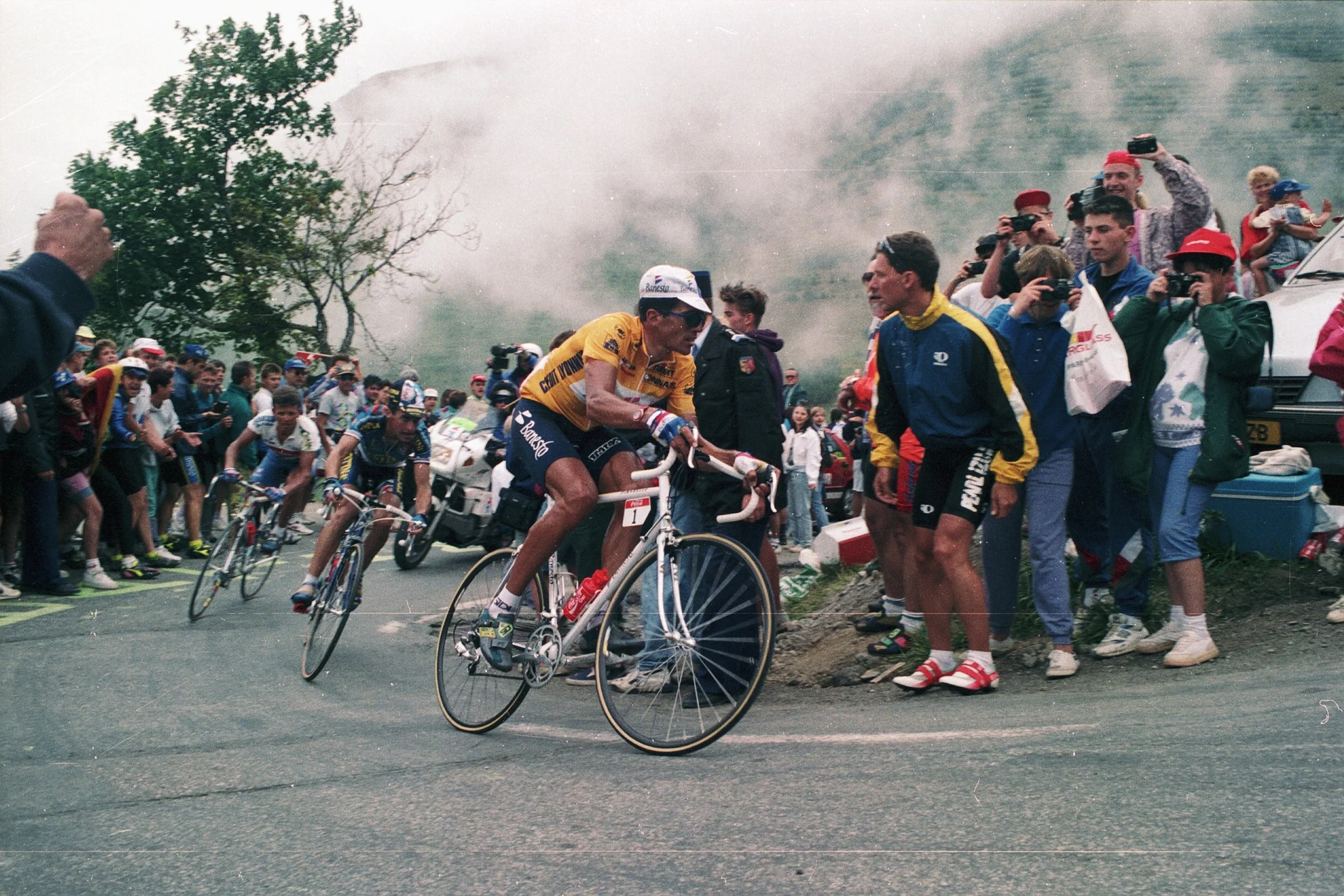The Steel Paradox
The last time a steel bike won the Tour De France was back in 1994. Ridden by Miguel Indurain, it was a Pinarello badged bike, allegedly built under contract by Italian frame building legend, Dario Pegoretti.
A quick look back at that bike will tell you all you need to know about how far steel has come.
Pegoretti added an extra 2cms of head tube, so they could reduce the size of the front triangle and increase the stiffness. At the time, changes like this were the best way to stiffen up the frame. Today we build race bikes using the same basic methods of cutting and joining tubes, the way Pegoretti still does, but the steel has changed beyond recognition.
Columbus tubing is a seamless steel alloy tube, produced by Columbus in Italy and represents the highest steel technology available. It is lighter, higher profile tubing, with butting to reduce material where it’s not needed. Mated to oversize or tapered head tubes, larger-standard bottom brackets and cleverly drawn stays, we can produce frames that are both stiff, light and wonderfully compliant.
A quick look at the main manufacturers websites will tell you that pound for pound, both in cash terms and grams, a modern steel bike can in some cases give away just 200g to a pretty fancy carbon bike, that’s about the same as a packet of cookies. Weight isn’t the problem it used to be.
Corrosion resistance is massive too, and unlike both aluminium and carbon, steel's mechanical properties means it does not fatigue over time. Therefore, if you buy a steel frame that’s been welded or brazed properly, it should last a very long time too.
It’s somewhat of a paradox to suggest something can be stiff and compliant - and just hearing that something can be made of steel and also light is difficult to get your head around - but that’s just what it is; light enough to smash the ups, but planted, absorbing and settled on the descent.
The feeling you get from a steel bike is unique. Steel geeks bang on about it all the time, but it is a different feel.

